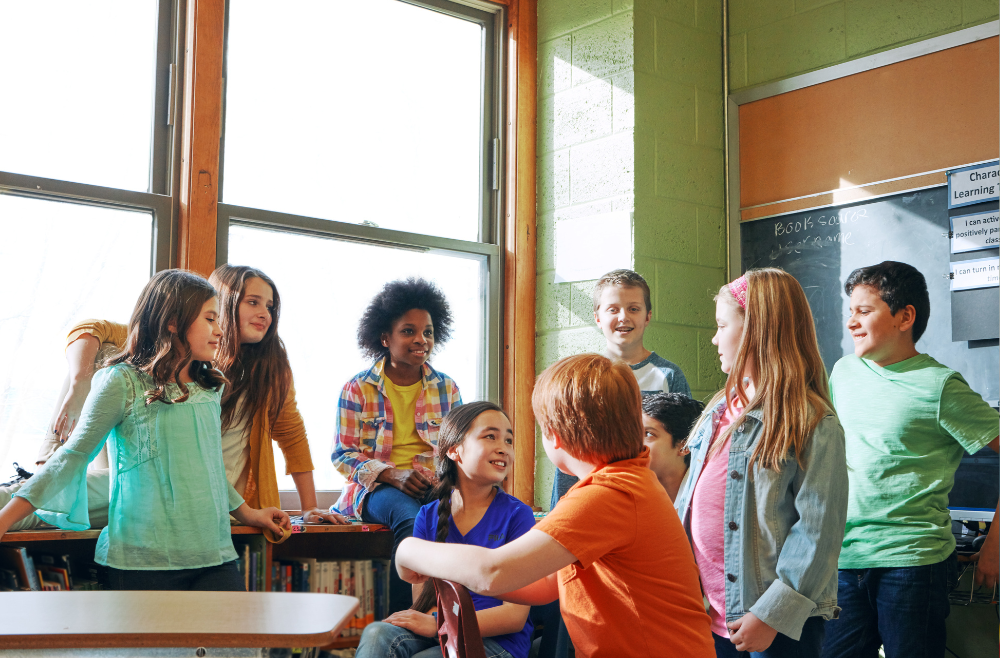April Is Diversity Month: Simple Ways to Teach Kids About Culture and Diversity at Home

As a parent, you wish to raise your child to be kind, curious, and comfortable in a world full of different people, places, and perspectives. Your likely hope is that they’ll grow into adults who can walk into any room, talk to anyone, and show empathy for someone whose life looks different from their own.
But that kind of understanding doesn’t just happen. It starts with what kids see, hear, and experience every day—and that learning begins at home.
April is Celebrate Diversity Month, and it’s a perfect time to create space for meaningful conversations and hands-on learning with your child. You don’t need to take a global trip (although that would be amazing)— a little intentionality can go a long way in helping your child appreciate the rich tapestry of cultures around them.
Here Are Some Approachable, Age-Friendly Ways to Start a Culture and Diversity Journey with Your Child.
1. Read Books That Reflect a Variety of Voices
Books are powerful windows into other people’s lives. When children read stories from different cultures or perspectives, they begin to understand that their way isn’t the only way—and that’s a good thing. Read together, and you’ll find natural conversational openings to talk about multicultural communities.
Visit your local library and ask for recommendations that reflect a variety of cultural backgrounds, family structures, and traditions. Look for books that celebrate differences, and help establish common ground by including books where kids who don’t look like your child are simply being kids—playing soccer, going to school, baking with grandma. Normalizing diversity is just as important as highlighting it.
2. Explore the World Through Food
Food has a way of bringing people together like nothing else. Why not make dinner one night a little more global?
Pick a country or culture to “visit” and plan a meal together. Watch a short video about how the dish is traditionally made, look up its cultural significance, and get your child involved in the cooking process. Keep it simple—frozen dumplings and store-bought naan are completely fine. The conversation around the food is what matters most.
Little bites lead to big conversations.
3. Learn About Holidays Around the World
Kids are naturally curious about holidays, especially those with unique foods, music, or clothing. Use that curiosity to teach them about important celebrations from different cultures, like Ramadan, Passover, Diwali, Lunar New Year, or Juneteenth.
You don’t have to celebrate these holidays yourself to talk about them. Just acknowledging that other families have different traditions can be a powerful way to raise culturally sensitive and inclusive thinkers.
With a quick online search, you’ll find great kid-friendly videos, coloring pages, and printable activities to make learning about new holidays fun for kids of all ages.
4. Fill Your Home with Diverse Music and Art
Build a “World Beats” playlist together as a family. From West African drumming to Irish folk songs to Bollywood dance tracks, kids will love the rhythm and energy—and you may find yourself dancing with them, too.
You can also explore art from different cultures, whether it’s watching traditional dances on YouTube, learning about Native American pottery, or visiting a local cultural festival or museum. These experiences plant seeds of appreciation and curiosity that last a lifetime.
5. Start Conversations About Kindness and Inclusion
As your child learns about the world, they’ll naturally ask questions. Some will be simple, and others will be tricky. Keep the door open for these conversations. You don’t have to have all the answers—just a willingness to talk openly with them.
When you hear a question like, “Why does that person wear that?” or “Why don’t we celebrate that holiday?” take it as an opportunity to model respect, curiosity, and open-mindedness.
Let’s Work Together to Help Children Understand Our World, One Conversation at a Time.
At Best in Class Education Center, we believe every child benefits from learning in an environment that fosters curiosity, kindness, and confidence. Encouraging diversity of thought and background helps students grow academically and as people.
If you’re looking for a learning environment where your child is supported as a whole person, let’s talk! Find a center close to you to learn more about how we help students build strong academic skills and meaningful life values.

